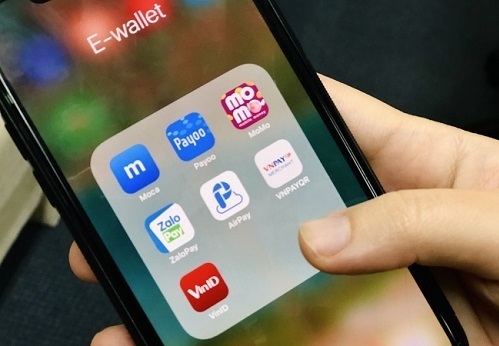
Mr. Pham Tien Dung, director of the Payment Department of the State Bank of Vietnam, said that one of the most special marks in the local payment market in the past five years is the development of e-wallets. The transaction value via e-wallets is almost equivalent to banking transaction, said Dung.
Banks, at the same time, can expand the range of customers and take advantage of an existing payment ecosystem connected to e-commerce platforms, convenience stores, etc., especially in the context of the pandemic, when contactless payment is preferred.
Ms. Dinh Hong Hanh, Manager of Financial Advisory Services, PwC Consulting Vietnam, said: “Electronic payments became popular before the Covid-19 pandemic. However, the pandemic has spurred an explosion in e-payments, 3-5 years faster in terms of adoption rate. This is a new opportunity for the entire digital payments ecosystem, including banks and financial technology (Fintech) companies, and e-wallets to grow.”
According to a recent survey by Visa, the number of people using e-wallets and cashless payment applications has increased sharply in recent years, especially since the pandemic.
More than 85% of consumers own at least one e-wallet or payment app, and more than 42% of consumers use contactless payments via mobile devices. In particular, 71% of users use e-wallets or payment applications at least once a week.
According to the State Bank of Vietnam, the Vietnamese market has about 43 e-wallets and non-bank payment intermediaries. This number has increased seven times compared to 2015.
Besides the familiar brands such as: MoMo, VNPAY, ShopeePay (formerly Airpay), ViettelPay, ZaloPay, Moca (GrabPay), Payoo, the e-wallet market is being heated up with the presence of a series of Vietnamese Fintechs and also large corporations with diverse ecosystems such as: VinID (of VinGroup), VNPT Pay (VNPT), SenPay (FPT), MobiFone Pay (VNPT), eM (partially acquired by Alibaba and being integrated into Lazada), SmartPay, G-Pay…
Competition
With more than 40 e-wallet providers, competition in the Vietnamese market is fierce. The three leading e-wallets - Momo, Moca and ZaloPay - account for 90% of the market share.
Even so, the big e-wallets are having a hard time as they have failed to show their competitive advantage over applications developed by traditional banks that have caught up with e-wallet functions.
Mr. Tran Van Trong - Chief of Office of the Vietnam E-commerce Association (Vecom) – said that there are too many intermediary payment service providers, but they are not synchronized, leading to waste in market expansion and confusion for users.
The need to gain a competitive edge in the future may push e-wallet providers to merge a few super apps to dominate the market.
Most recently, in December 2021, MoMo completed the 5th round of funding (Series E) with about US$200 million from global investors, including Mizuho, Ward Ferry, Goodwater Capital and Kora Management. This funding round was led by Mizuho - Global Bank of Japan.
VNPAY has launched a new version of e-wallet. VNPay is well known for its QR code payment network. VNPay is said to have officially achieved "unicorn" status after a funding round last year from Softbank Vision Fund and state investment fund GIC.
According to AppotaPay's forecast, the cashless payment market will develop very strongly in the next 3-5 years. In particular, Mobile Money and e-wallets will be key services to help cashless payments capture the remaining large market share in the online payment picture in Vietnam.
To attract users and merchants, e-wallet providers have had to "burn money" for discounts and marketing. The advantage will belong to the e-wallet that has many features, utilities and incentives to retain users.
